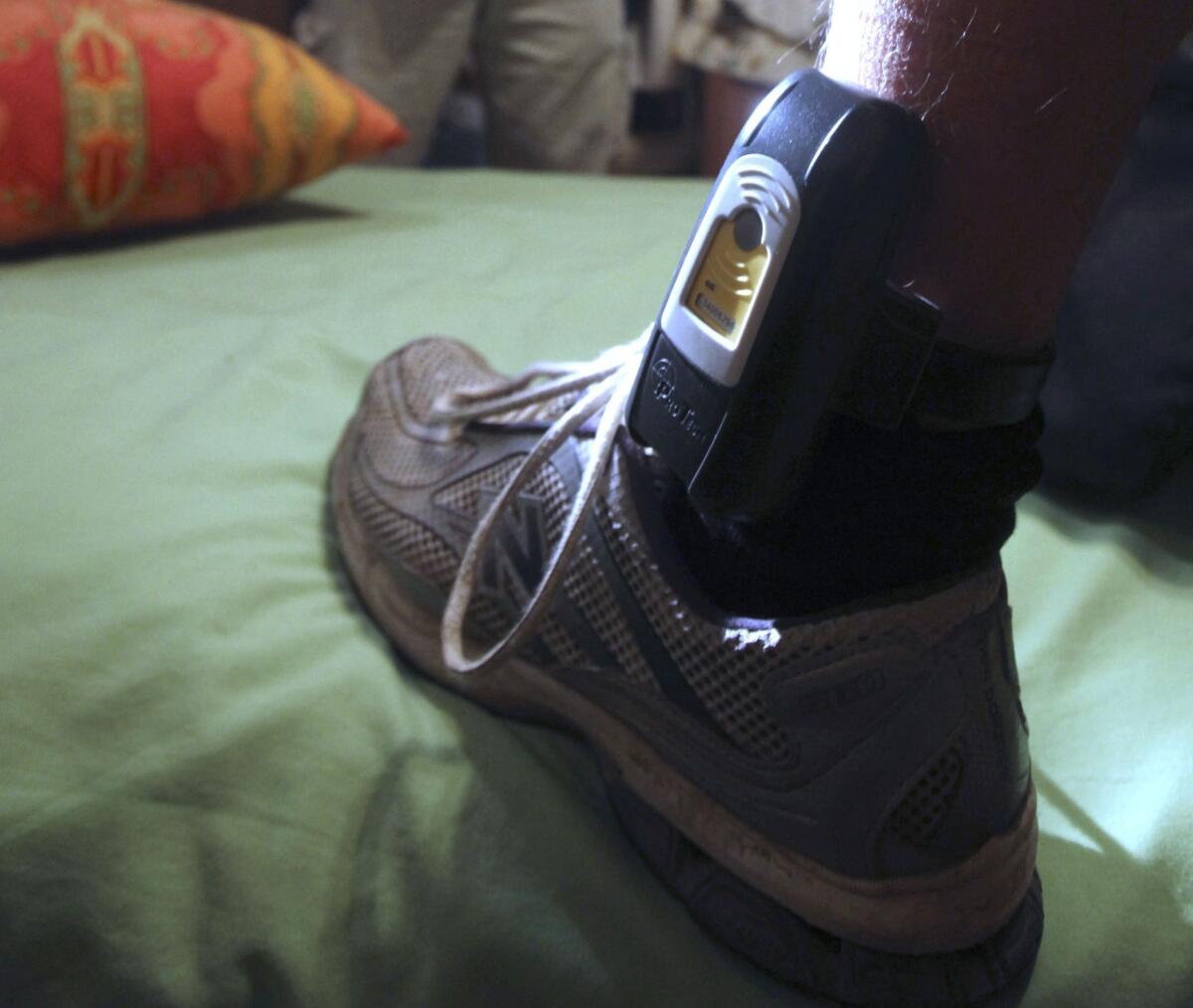Parolee GPS ankle monitors: Major flaws found in vendorâs system

The electronic ankle monitors California used for several years to monitor more than 4,000 high-risk sex offenders and gang members were so inaccurate and unreliable that corrections officials said that the public was âin imminent danger.â
A little more than a year ago, California quietly began conducting tests on the GPS devices that track the movements of thousands of sex offenders.
Officials found that batteries died early, cases cracked and reported locations were off by as much as three miles. They also found that tampering alerts failed and offenders were able to disappear by covering the devices with foil, deploying illegal GPS jammers or ducking into cars or buildings.
REDACTED: Alarming ankle monitor findings
The state abruptly ordered parole agents to remove every ankle monitor in use from north of Los Angeles to the Oregon border. In their place, they strapped on devices made by a different manufacturer â a mass migration that left Californiaâs criminal tracking system not operational for several hours.
The test results provide a glimpse of the blind spots in electronic monitoring, even as those systems are promoted to law enforcement agencies as a safe alternative to incarceration. The flaws in the equipment raise the question of whether the state can deliver what Jessicaâs Law promised when voters approved it in 2006: round-the-clock tracking of serious sex offenders.
In a lawsuit over the stateâs GPS contracting, corrections attorneys persuaded a judge to seal information about the failures, arguing that test results could show criminals how to avoid being tracked and give parole violators grounds to appeal convictions.
The information, they warned, would âerode public trustâ in electronic monitoring programs. The devices, they said, deter crime only if offenders believe their locations are being tracked every minute.
âThe more reliable the devices are believed to be, the less likely a parolee may be to attempt to defeat the system,â GPS program director Denise Milano wrote in a court statement.
State officials say the replacement devices have largely resolved the problems, but officials so far have refused to release test data showing what, if any, improvements were gained.
GPS tracking devices are designed to alert authorities if the wearer tampers with the device, tries to flee or strays too close to a school or other forbidden area. Currently, 7,900 high-risk California parolees and felons â most of them sex offenders or gang members â wear the devices strapped to their ankles.
The monitors work by picking up signals from GPS satellites and transmitting the location information by cellular networks to a central computer. Just like GPS devices used by drivers or hikers, the monitors can fail where buildings block signals or where cell reception is spotty.
But that is not the monitoring systemâs sole vulnerability: A Times investigation in February found that thousands of child molesters, rapists and other high-risk parolees were removing or disarming their tracking devices â often with little risk of serving time for it because Californiaâs jails are too full to hold them.
The stateâs testing was conducted as part of a winner-take-all contest for the nationâs largest electronic monitoring contract, worth more than $51 million over six years. Industry experts said they were the most exhaustive field trials they had seen.
When statewide monitoring began in 2008, California split the work between a division of 3M Co. and Houston-based Satellite Tracking of People, or STOP. The 3M device was used to track some 4,000 parolees in all but six Southern California counties. STOP had the rest of the state, including Los Angeles.
When California later sought to switch to a single provider, 3M came in with the low bid.
For a week in late 2011, parole agents abused both companiesâ devices. They were dropped four feet onto concrete, wrapped in foil to block their signals and submerged as long as three hours in a swimming pool.
Testers allowed batteries to run dead, cut ankle straps and traveled into areas beyond the reach of satellite and cellular phone signals.
Without revealing full details of the tests, officials declared 3Mâs devices so faulty that the state rejected the companyâs bid. When 3M protested, Milano began a second round of tests that she said showed 3Mâs ankle monitors posed a public safety emergency.
The state claimed that 3Mâs devices failed to meet 46 of 102 field-tested standards for the equipment, although the company said a fourth of the failures occurred because the state had not provided the phone numbers needed to send automated text alerts.
ALSO:
Kosher butcher allegedly sold non-kosher meat
Hundreds join in Easter celebration at skid row mission
Expelled Nevada lawmaker Steven Brooks arrested near Barstow
More to Read
Sign up for Essential California
The most important California stories and recommendations in your inbox every morning.
You may occasionally receive promotional content from the Los Angeles Times.











